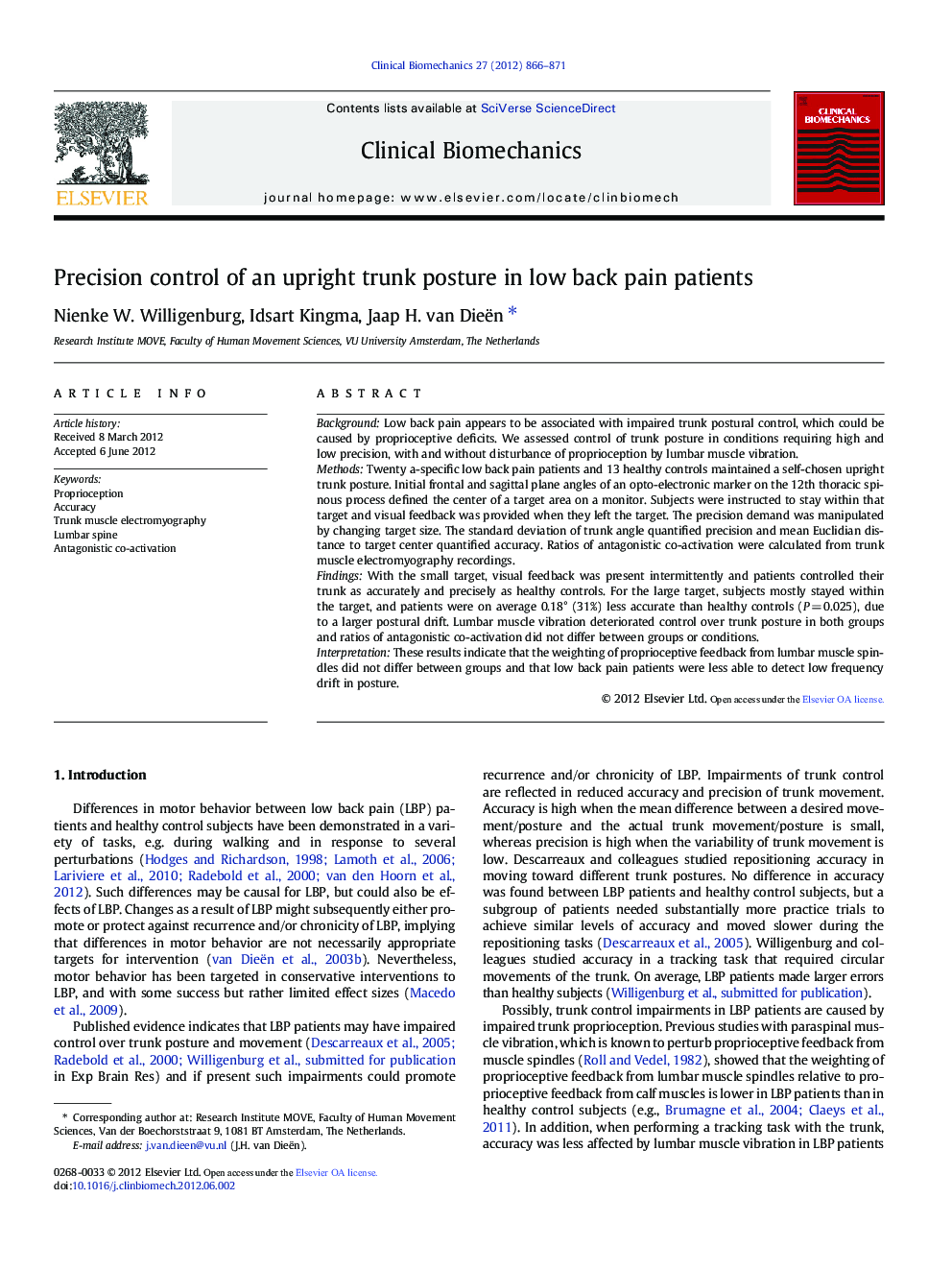| کد مقاله | کد نشریه | سال انتشار | مقاله انگلیسی | نسخه تمام متن |
|---|---|---|---|---|
| 6204973 | 1264934 | 2012 | 6 صفحه PDF | دانلود رایگان |

BackgroundLow back pain appears to be associated with impaired trunk postural control, which could be caused by proprioceptive deficits. We assessed control of trunk posture in conditions requiring high and low precision, with and without disturbance of proprioception by lumbar muscle vibration.MethodsTwenty a-specific low back pain patients and 13 healthy controls maintained a self-chosen upright trunk posture. Initial frontal and sagittal plane angles of an opto-electronic marker on the 12th thoracic spinous process defined the center of a target area on a monitor. Subjects were instructed to stay within that target and visual feedback was provided when they left the target. The precision demand was manipulated by changing target size. The standard deviation of trunk angle quantified precision and mean Euclidian distance to target center quantified accuracy. Ratios of antagonistic co-activation were calculated from trunk muscle electromyography recordings.FindingsWith the small target, visual feedback was present intermittently and patients controlled their trunk as accurately and precisely as healthy controls. For the large target, subjects mostly stayed within the target, and patients were on average 0.18° (31%) less accurate than healthy controls (P = 0.025), due to a larger postural drift. Lumbar muscle vibration deteriorated control over trunk posture in both groups and ratios of antagonistic co-activation did not differ between groups or conditions.InterpretationThese results indicate that the weighting of proprioceptive feedback from lumbar muscle spindles did not differ between groups and that low back pain patients were less able to detect low frequency drift in posture.
Journal: Clinical Biomechanics - Volume 27, Issue 9, November 2012, Pages 866-871